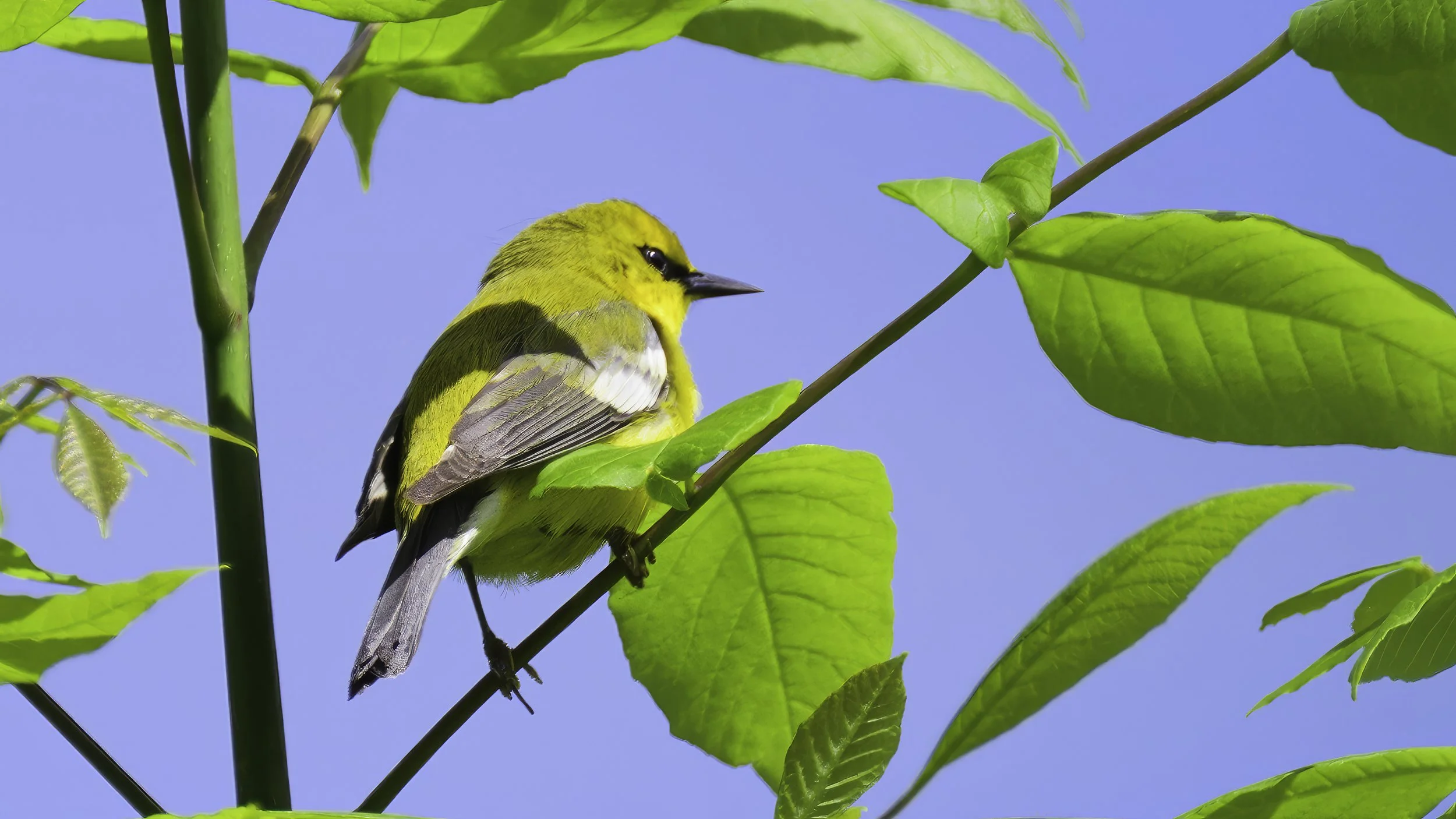Kenridge Farm
A small group of birders from out local club joined forces to see what spring migrants and other critters we could find and hopefully photograph. The early morning was alive with the “dawn chorus”. Our group leader Brenda was able to identify 17 species singing in the forest before we even assembled to begin our “official;” start. Some of the birds heard such as the Blue-winged warbler, Scarlet tanager, and Baltimore oriole were among the targets I had hoped to get a chance to photograph. And so we began our morning trek with high hopes.
We decided to drive down from the upper parking lot to the lower lot and walk back towards the ponds on the property. We were delayed on the way down by a Wild turkey that decided to hang out for a while on the pavement. The bird would briefly act as if it was heading off the road and out into the surrounding fields only to abruptly stop and reverse its course back onto the road. We sat patiently in our vehicles, not wanting to stress the bird in any way, for at least several minutes before the turkey finally trotted on down the road and eventually off into the forest.
Another bird showing a fondness for the roadsides was a lone Killdeer. These birds prefer to nest on flat sand and gravel areas and unfortunately roadsides fit the bill quite nicely. In the not too distant past, Killdeer were a common sight here at the “farm” , but lately they have not been as prevalent. Hopefully this bodes well for the species and we will see more of them in the future.
.As we left the road and headed onto the trails, we heard and found a good number of song birds up in the canopy. Even though it is still early spring, the trees are beginning to leaf out in earnest and it is becoming harder and harder to locate the source of much of the song. The loud trill of the Red-bellied woodpecker lead us to the bird simply because the woodpecker was drilling on the trunk of the tree and not hidden by the foliage.
Another easily spotted songster was the Red-winged blackbird. With its call of “Conk-la-reeee” resonating across the fields, we were able to quickly find the bird perched on the perimeter of this Eastern red cedar. Easily seen and easily photographed….that’s a nature photographer’s dream. Another photogenic subject for today’s wildlife images was the Cottontail rabbit seen below. The cottontail rabbit, commonly found across North America, is known for its distinctive fluffy white tail that resembles a cotton ball, giving it its name. Typically measuring between 12 to 20 inches in length, these rabbits have a stocky build with long ears and strong hind legs. They thrive in varied habitats, including forests, fields, and gardens, where they feed primarily on grasses, clovers, and other green vegetation. Cottontail rabbits are crepuscular, meaning they are most active during dawn and dusk, which helps them avoid predators. But here we were in mid-morning under bright sunny skies and this little guy was happy to sit out in the middle of the trail for us to view and photograph. Nice when they cooperate!
As we walked back to the furthest body of water, known as the Muskrat Pond, we were hoping for two birds we have seen here in the past….the Wood duck and the Blue-winged warbler. Once again, the target species were most cooperative and we got nice views of both. The Wood duck is one of the most beautifully plumaged birds in North America. As is usually the case, the male (left) is vividly colored and the female (right) is more muted. We assume that this is a bonded pair and will be bringing forth some new Wood duck ducklings in the not so distant future.
The other avian species we had are sights on in this area was the Blue-winged warbler pictured above. The call of the Blue-wing is a burry “Bee-buzz”. As is so often the case, we heard the warbler singing from the thick brush, but had a hard time pin-pointing the exact location. Finally the bird decided to stop giving us a hard time and emerged to sit on the top branches of a sapling. The warbler continued to perch and occasionally rear back and send out its call to perhaps attract a nearby female of simply to establish the fact that this is his territory. We were quite thrilled to have the opportunity to hear and see this beautiful creature.
In close proximity to our warbler, we heard and then easily found a gorgeous male Baltimore oriole in full breeding plumage. As you can see, there was very little foliage on the top of this tree and the viewing and photo-ops were ideal. Great way to wrap up the day. All in all, we saw and/or heard over 50 species during our three plus hours on the property. Wonderful birding with wonderful friends in a wonderful setting. Doesn’t get much better.







